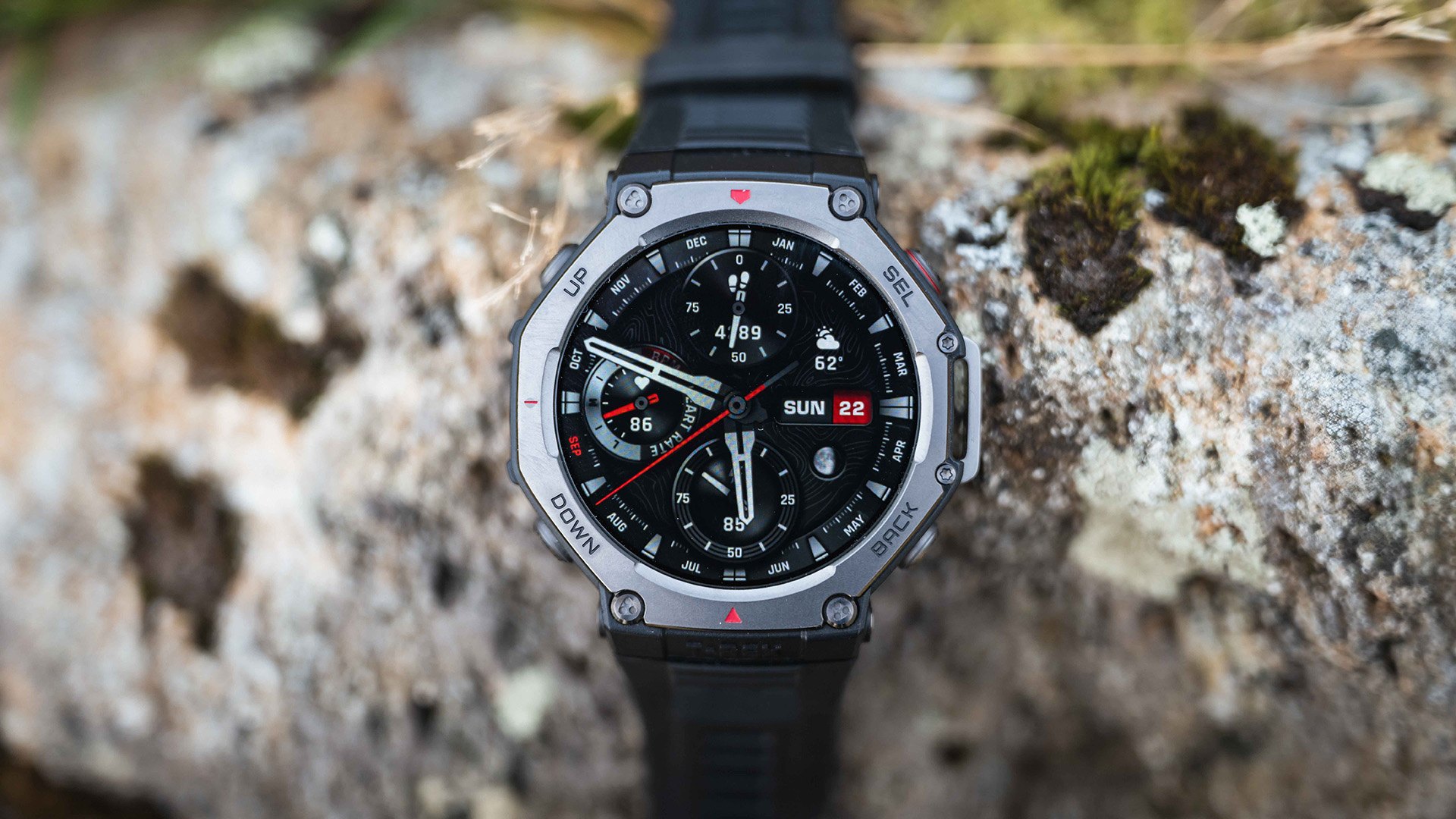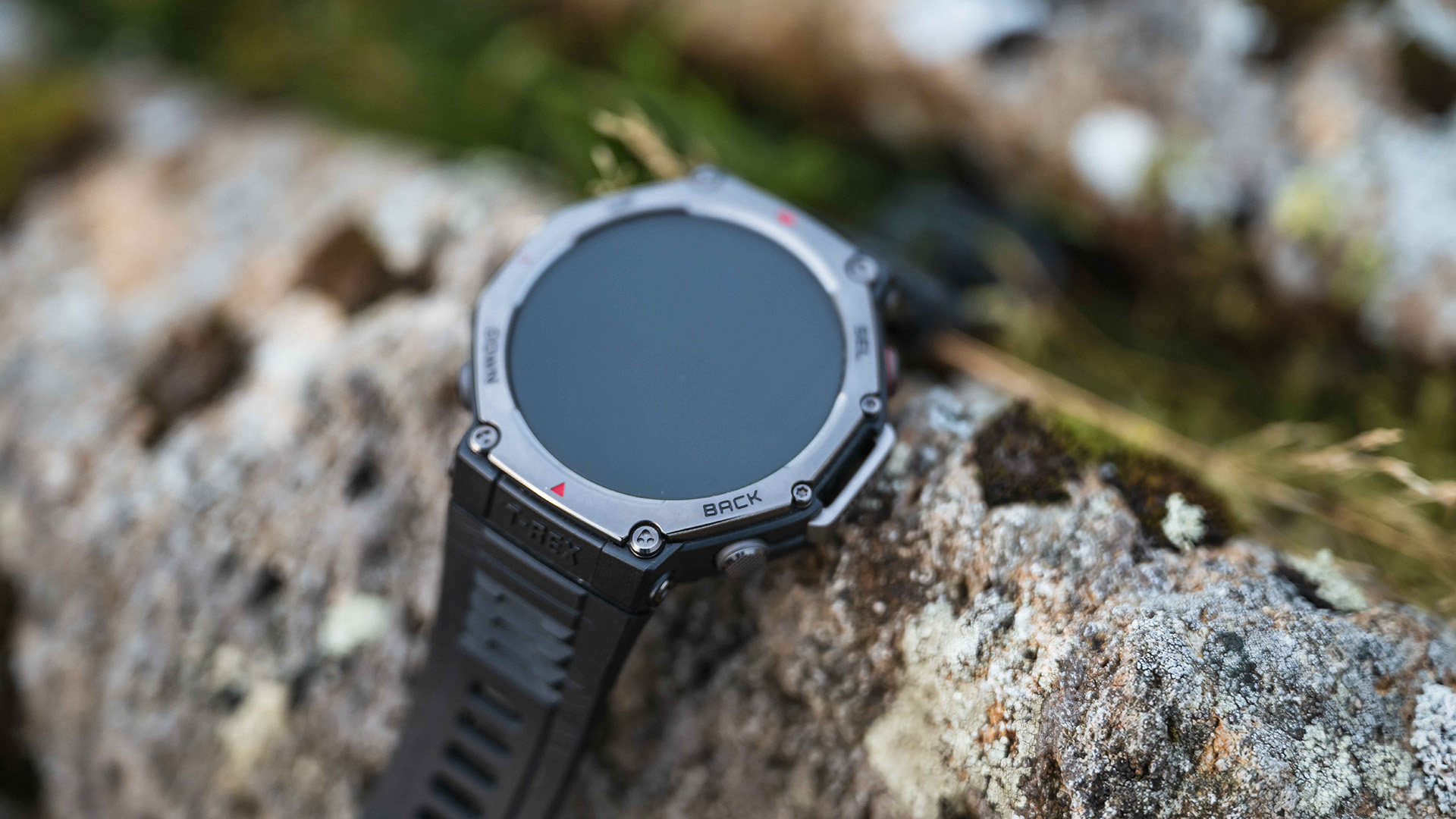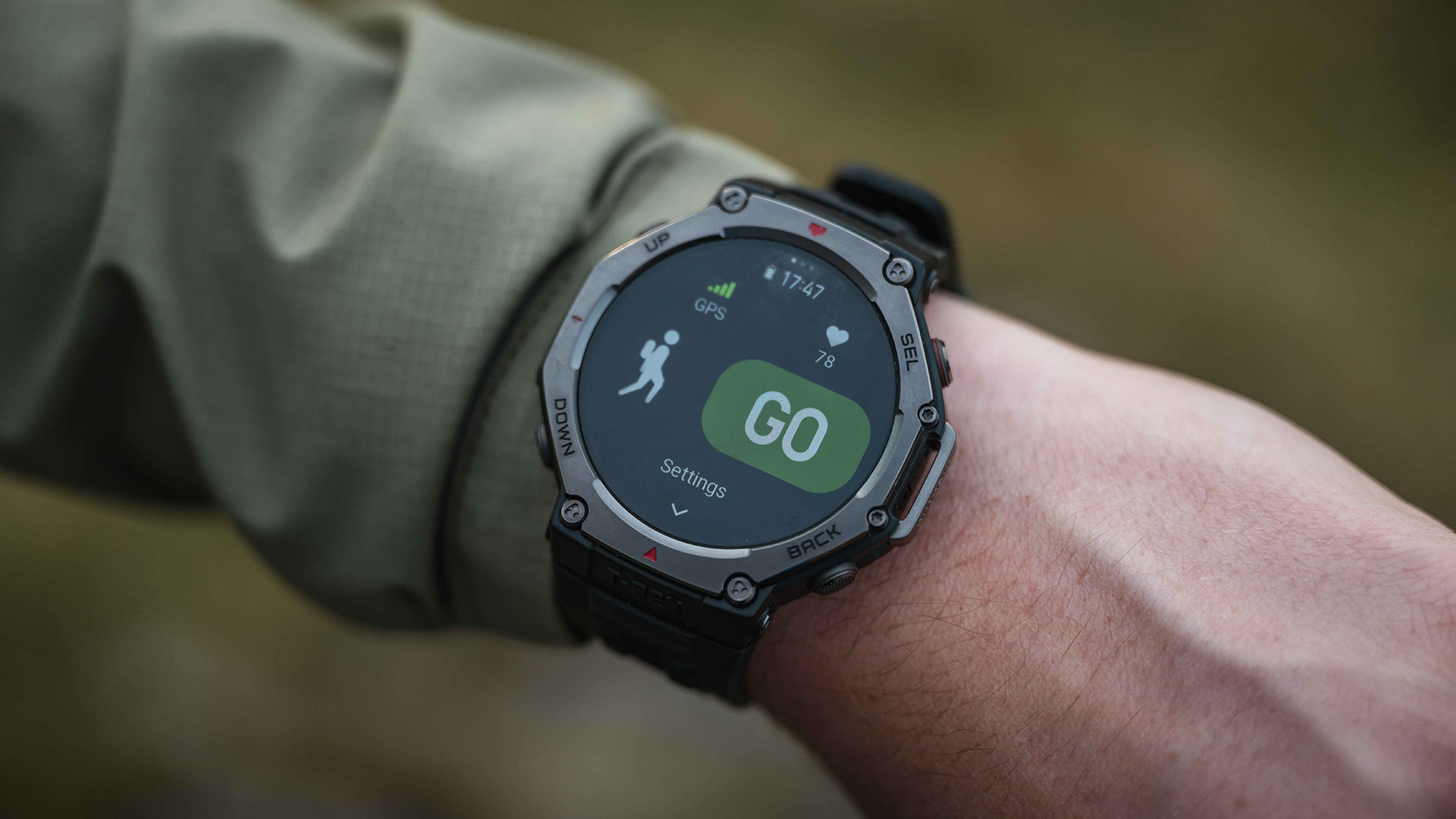Amazfit T-Rex 3 review: The affordable adventurer’s answer to Garmin
Adventure-ready and budget-friendly with just a few software setbacks

The T-Rex 3 might not have the same levels of customisation as a Garmin Fenix, but given it’s nearly ⅓ of the cost, that is excusable. The hardware is polished, but the software needs a few tweaks. With a few software updates, all of my issues could be solved. Garmin used to be my go-to recommendation for rugged GPS watches, but with this latest update from Amazfit, it's becoming harder and harder to see the value gained by spending considerably more.
-
+
Excellent battery life
-
+
Beautiful display
-
+
Unparalleled value
-
+
Accurate GPS
-
+
Rugged looks
-
-
Automatic workout detection is unreliable
-
-
Watch faces not customisable
-
-
No solar charging
Why you can trust T3

The Amazfit T-Rex 3 faces stiff competition in the shape of Garmin’s Fenix range. The updated T-Rex 3 packs many of the same features but at a considerably lower price point; it sounds very appealing but can it compete with the best?
Headline specs are certainly impressive and the T-Rex 3 looks like it’s ready for some hardcore adventuring, the stainless steel bezel encircling the 1.5” AMOLED display looks stunning and Amazfit claim the device will run for 27 days under ‘typical usage conditions’.
How does it compare to its predecessor, the Amazfit T-Rex 2, and the best outdoor watches, including the ever-so-popular Garmin Fenix 8? I took the watch for a spin to see how it performs. I wasn't disappointed!
Amazfit T-Rex 3 review
Price and availability
The Amazfit was released in September 2024 and costs £279/ $279, an increase of roughly £60/$60 over the outgoing T-Rex 2. It can be bought directly from Amazfit.
Design and materials

The T-Rex 3 continues the design trend of a metal bezel, exposed screw heads and angular corners being indicative of ruggedness. Some will think it looks a bit OTT but I personally quite like it. The screw heads aren't even a recognisable standard so are purely ornamental.
The main chassis of the watch is made from a polymer which is likely due to weight and cost savings. There is a fine line though, on one side of the device there is a metal loop protruding from the chassis which seems to serve no actual purpose.
Elsewhere, the 22mm wide silicone strap feels comfortable on the skin and the slight contour detailing is a nice subtle design touch. The strap is replaceable by using the included tool; the lugs are fixed much like the straps on the Garmin Instinct range.
GPS equipped watches continue to brim with features and the T-Rex 3 is no different. Sporting a 1.5” AMOLED display with peak brightness of 2,000 nits, this is an upgrade in both size and brightness (1.39”and 1,000 nits) over the outgoing model. The display is also made from Gorilla Glass so should be able to shrug off any impacts and scratches encountered on epic adventures. The watch is also fully controllable via the four buttons on the side of the watch should you be wearing gloves.
There’s no word on what processor is driving the T-Rex 3 but it’s certainly impressive. Battery life is claimed to be 27 days under normal usage conditions and can be extended to 40 days in battery saver mode which reduces certain health tracking features such as heart rate, blood oxygen and sleep tracking to preserve battery. When it does eventually go flat, the T-Rex 3 takes around three hours to recharge using a USB-C powered cradle.
For those looking to head off into the wilderness for days on end, the T-Rex 3 will run for up to 42 hours in the most accurate GPS mode or a staggering 180 hours in the most energy efficient setting.
Multiple people (including me) have been surprised yet impressed at how slick the device is when swiping through menus and generally interacting with the device. I’ve experienced how incredibly frustrating it can be to have a laggy and unresponsive device but can happily report that the T-Rex 3 is easily on par with a Garmin Fenix or Epix.
AI Integration
It wouldn’t be 2024 without some mention of AI, and Amazfit have integrated ‘ZeppFlow’ into the device. Powered by OpenAI’s GPT-4 technology, it’s possible to control the T-Rex 3 solely with your voice, including speech to text replies in messages, but this feature is only available on Android devices.
GPS and navigation

I found the GPS accuracy to be on par with other devices I’ve tested recently, occasionally struggling in thick forests or around tall buildings but on the whole it did a solid job.
In my eyes, mapping is one of the cornerstones of a good, rugged GPS watch and the T-Rex 3 doesn't disappoint on the most part. My only issue here is that maps need to be downloaded to the device which requires your phone to have a data connection so a little bit of pre planning is needed to download the correct maps for the area.
Apart from this, the data and navigation offered is excellent with turn by turn navigation available for imported routes as well as on device routing back to your start point. If your hiking tends to involve mountains, the T-Rex 3 includes an ultra low temperature mode to preserve battery life as well as an altitude assistant to avoid altitude sickness.
Activity Tracking

With the ability to track 177 sports including hula hooping, wingsuit flying and disco dancing there shouldn't be many people feeling left out. The device will pair to external sensors too via bluetooth for added workout data. Health monitoring is taken care of by a BioTracker PPG biometric sensor which monitors heart rate, heart rate variability, body temperature, and blood oxygen among others.
Heart rate accuracy is generally good but as I’ve found with many other wrist based heart rate monitors, it’s accuracy leaves a little be be desired when exercising. I experience a few drop outs in data and incorrect readings but I would always prefer to use a chest mounted strap if I wanted reliable data.
The T-Rex 3 includes automatic workout detection for a number of sports including hiking, running and cycling. In theory this sounds like a really useful feature, how many times have you forgotten to start recording? In practise however, it’s quite unreliable. On multiple occasions when driving, the device started recording a bike ride which caused havoc on Strava when I was unexpectedly the new KOM on various segments around Bristol. I’m sure this feature could be tweaked into something genuinely useful with a software update but for the time being, I had to switch it off.
Software shortfalls
There are other small software niggles that were a little frustrating during testing. I tested the watch whilst surfing and found that the screen would register touch from being in contact with my wetsuit. A simple solution would be to switch off touch sensitivity for certain workouts but this doesn't seem to be possible yet. I also found the ‘raise to wake display’ function temperamental with the watch often not registering my wrist raising so I had to press a button to wake the display. It’s certainly not on the same level as an Apple Watch.
There are heaps more features packed into this watch that are beyond the scope of this review including sleep tracking, widgets, and Zepp Pay.
Verdict

There's certainly no denying the Amazit T-Rex 3 is a hugely impressive device given it only costs £279, some £600 cheaper than the Garmin Fenix 8. The battery life and screen are excellent and make this device a genuine contender for a proper adventure watch. There are a few issues however but they can all be fixed with a software update (hopefully).
Also consider
Garmin Fenix 8: I’ve referenced this watch throughout this review, and for good reason. It’s the benchmark for rugged adventure watches, but it does come at a considerable cost.
Coros Vertix 2S: Another heavyweight in the sector, offering 36 days of runtime and plenty of options for activity tracking.
Polar’s Grit X Pro: claims to be a highly rugged device but only has a 7 day battery life, so only 25% of the T-Rex 3.
Sign up to the T3 newsletter for smarter living straight to your inbox
Get all the latest news, reviews, deals and buying guides on gorgeous tech, home and active products from the T3 experts

Matt has a passion for the outdoors whether on foot, two wheels or by paddle. After a brief foray into the bike racing scene, Matt armed himself with an OS map and a sense of adventure, and decided the endless miles of trails in the Scottish highlands were more his idea of a good day out.
Never one to sit still (or indoors), he can often be found riding and hiking in foul weather, testing the latest bit of kit or just out for a good time.
Having spent his formative years loitering around the local bike shop rather than sneaking into the pub, he’s spent far too long tinkering and fixing his ever evolving fleet of bikes so at least one of them is in a fit state to be ridden on an unsuitable adventure.
When Matt isn’t riding bikes or walking up hills, he’s a freelance photographer specialising in the hospitality and outdoor sectors and can be found shooting for clients across the country.
-
 Polar’s new subscription feature lands in the shadow of Garmin’s Connect+ rollout
Polar’s new subscription feature lands in the shadow of Garmin’s Connect+ rolloutPR genius or timing disaster? Polar’s new Fitness Programme adds adaptive training to its ecosystem
By Matt Kollat Published
-
 New Orient Star watches offer a glimpse of the magic within
New Orient Star watches offer a glimpse of the magic withinThere are two new skeleton pieces
By Sam Cross Published
-
 Netflix's most surprising 100%-rated sci-fi series returns with gorgeous trailer
Netflix's most surprising 100%-rated sci-fi series returns with gorgeous trailerLove Death + Robots is back for more
By Max Freeman-Mills Published